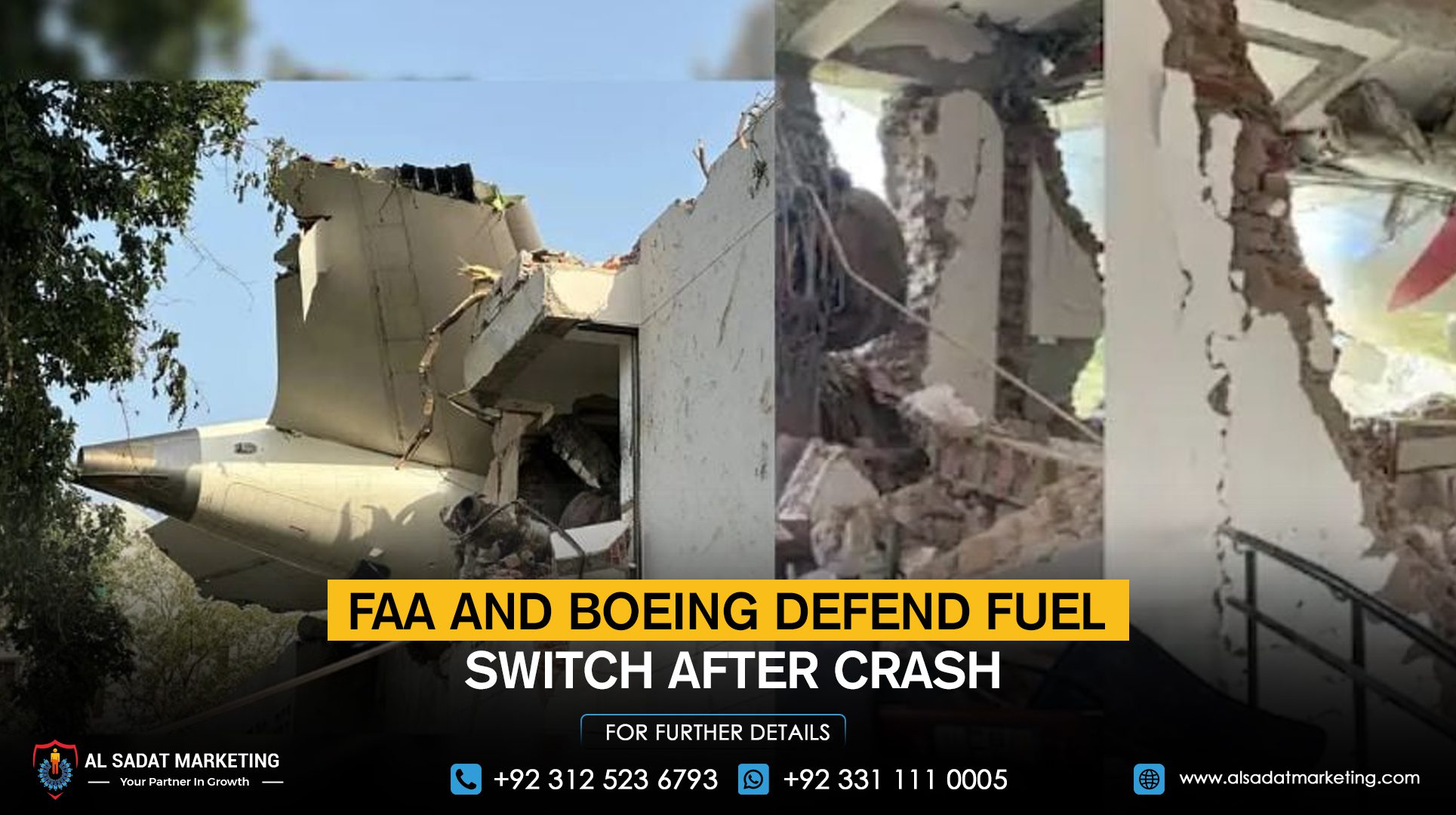The fuel cutoff switch locking mechanism on Boeing aircraft, including the Dreamliner 787, is safe and doesn’t need immediate changes, the U.S. Federal Aviation Administration (FAA) and Boeing have secretly told international aviation regulators.
Although the fuel control switch locking design is similar across different Boeing aircraft types, the FAA does not view the mechanism as a “unsafe condition” that calls for an airworthiness directive, according to a July 11 notification obtained by Reuters.
The action follows a preliminary investigation by India’s Aircraft Accident Investigation Bureau (AAIB) that showed the fuel controls on the Air India Boeing 787 were flipped to “cutoff,” causing both engines to shut down shortly after takeoff.
The letter sent to international civil aviation authorities stated, “The FAA does not consider this issue to be an unsafe condition that would warrant an Airworthiness Directive on any Boeing aeroplane models, including the Model 787.”
In a multi-operator message (MOM) delivered to airline customers shortly after, Boeing reiterated this position. Two sources have confirmed that the American aircraft manufacturer is likewise not suggesting any additional action at this time. Boeing refused to comment when contacted for comment, and the FAA refused to provide any additional information beyond what was included in its warning.
Shortly after departure from Ahmedabad on June 12, the engines ran out of fuel mid-climb due to the mysterious flipping of fuel cutoff switches, according to the AAIB’s early findings.
One pilot was heard on voice recordings from the cockpit asking, “Why did you do the cut-off?” to which the other pilot responded, “I didn’t.”
In India’s rapidly expanding aviation industry, the tragedy has brought attention to cockpit procedures, mechanical safety measures, and general safety standards. It claimed the lives of 242 passengers and crew members on board and 18 people on the ground. It is regarded as the world’s deadliest civil aviation accident in more than ten years.
An old recommendation reappears in the investigation
An FAA Special Airworthiness Information Bulletin (SAIB) from 2018 was also cited in the AAIB’s report. It suggested, but did not require, that operators of a number of Boeing models, including the 787, check the locking feature of their fuel cutoff switches to make sure they could not be accidentally engaged.
But according to reports, Air India has not carried out these optional inspections. The airline explained in the report that the 2018 bulletin was not included in their maintenance schedule since it was advisory in nature rather than a regulatory necessity. Nevertheless, documents reveal that the unfortunate aircraft’s throttle control module, which contains the fuel switches, had been updated twice, in 2019 and 2023.
According to the AAIB findings, Air India had complied with all applicable airworthiness instructions and service bulletins at the time of the disaster.
Pilots’ union resists presumptions about mistakes
ALPA India, the International Federation of Air Line Pilots’ Associations’ (IFALPA) representative for Indian pilots, responded sharply.
advocated for a “fair, fact-based inquiry” and rejected any hasty inference of pilot mistake.
“At the very least, the pilot’s body must now be included in the probe as observers.”
– ALPA India President Capt. Sam Thomas
In an official letter posted on X (previously Twitter), the union raised worries that the report’s reference to the 2018 advisory suggests a possible equipment breakdown and stated that the switch design needs more investigation.
The need for transparency was supported by two aviation safety specialists headquartered in the United States. John Cox, a former ALPA U.S. representative, pointed out that although the AAIB report does not imply bias, pilot representatives ought to be permitted to watch the inquiry process.
“The report seemed fair and objective.”
— John Cox, Expert in Aviation Safety
Investigation ongoing, no definitive answers
Important issues still remain, primarily how both fuel switches were changed from “RUN” to “CUTOFF” in such a short period of time, despite the report’s conclusions and technical certifications from the FAA and Boeing.
The paper emphasised that the switches cannot be changed easily or unintentionally and must be operated manually in two steps. According to experts, it is extremely unlikely, if not impossible, for both switches to be disengaged in midair unless there was deliberate action or a serious system failure.
Uncertainty was increased when the switches were discovered at the crash scene back in the “RUN” position, indicating an attempted engine relight. However, because the aircraft was at a low altitude, it did not have enough time to recover.
According to international aviation standards, the crash’s final report is anticipated within a year. Meanwhile, in the nation’s growing aviation industry, concerns over pilot training, procedural compliance, and a more general safety culture are still being raised against India’s Civil Aviation Ministry and Air India.










